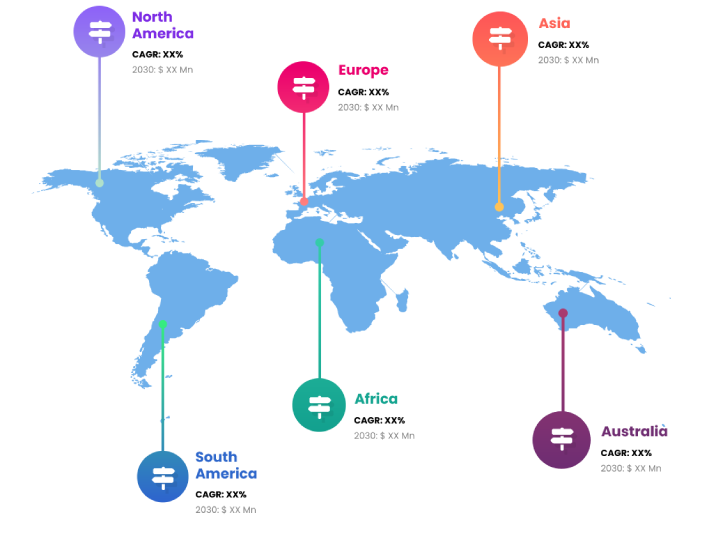
A sea change has occurred in the carpet industry within the past many years. The global market has been propelled by the pursuit of optimal pricing, punctual delivery, and high quality. In the cutthroat carpet industry, technological innovation supported by long-term viability will largely determine expansion prospects. Production of affordable, high-quality recyclable carpets is an area where industry players are consistently making progress. Better inventory management, real-time monitoring, efficient manufacturing cycles, and supply chain optimization have all been brought about by the deployment of novel technologies. New development paths have opened up for the stagnated market with the advent of antimicrobial and anti-allergenic technology, as well as LED-embedded carpets.
The most common materials used to make carpets are wool and synthetic fibers like nylon, polyester, and so on. The backing and the top layer are what make up a carpet. Wool was once the material of choice for carpets, but now synthetic materials like nylon, polyester, acrylics, polypropylene, etc. have mostly replaced wool due to their greater durability and cost-effectiveness.
Weaving, knitting, and tufted are some of the methods used to make carpets. In colder climates, carpets are utilized as floor insulation. They also add some style and color to the room. Decorative carpets have become more popular in recent years. For both commercial and residential interiors, carpets remain a popular choice for decoration and furnishing despite the availability of other options. Carpets have long since found a home in the transportation sector, particularly in the car and aeroplane industries. Wool and wool blend carpets are more expensive than synthetic carpets.
Stakeholders are finally starting to pay attention to issues like climate change, carbon emissions, and environmental sustainability. To lessen their negative influence on the environment, major companies are increasingly exploring sustainable eco-friendly carpets. Carpets are currently being seen as the vanguard of eco-friendly flooring options. In addition, customers, particularly millennials, are increasingly opting for eco-friendly and sustainable practices in nearly all aspects of their lives. These days, millennials look at items as a whole and place a premium on a brand's principles and ethics. Consequently, in the next years, the "green carpet" product idea is anticipated to get considerably more support.
A warm and pleasant house is easier to achieve with carpet. Carpeting also has many other useful properties, such as absorbing sound, dust and grime, pet dander, and moisture. Carpets also provide as a habitat for asthmatic bugs like cockroaches and dust mites. When vacuuming carpets, allergens and other household pollutants can be released into the air, which can aggravate asthma attacks in certain people. Adhesive glues and padding material can produce substances that could be dangerous to youngsters and the elderly, adding to their distress. The presence of these contaminants in flooring can have a negative impact on indoor air quality, leading to an increase in health problems like skin irritation, breathing difficulties, and weariness, among others.
The building and construction industries, as well as real estate investment, have seen explosive growth in response to the world's rapidly urbanizing population. Carpet sales will soar as a result of the expanding construction industry. The interior decoration industry benefits from increased disposable income, gross domestic product (GDP), and living standards in developing nations.
The demand for carpet will rise as the number of people actively decorating their homes rises. Carpet sales will also be driven up by the increasing number of home repair and building projects. There will be a corresponding increase in the carpet market as the number of vehicles on the road increases and more people buy cars. The carpet market will also benefit from the increasing output of electric vehicles. There will be a greater need for carpets designed for sports and leisure activities as the number of people participating in these activities continues to climb.
Report Coverage
Global Carpet research report categorizes the market for global based on various segments and regions, forecasts revenue growth, and analyzes trends in each submarket. Global Carpet report analyses the key growth drivers, opportunities, and challenges influencing the global market. Recent market developments and Carpet competitive strategies such as expansion, product launch and development, partnership, merger, and acquisition have been included to draw the competitive landscape in the market. The report strategically identifies and profiles the key Carpet market players and analyses their core competencies in each global market sub-segments.
| REPORT ATTRIBUTES | DETAILS |
|---|---|
| Study Period | 2017-2031 |
| Base Year | 2023 |
| Forecast Period | 2023-2031 |
| Historical Period | 2017-2021 |
| Unit | Value (USD Billion) |
| Key Companies Profiled | Mannington Mills, Inc, Berkshire Hathaway, Inc. (Shaw Industries Group, Inc.), Balta Group, Tarkett S.A, Brumark, Armstrong Flooring, Inc, The Dixie Group, Mohawk Industries, Inc, Beaulieu International Group N.V, Dorsett Industries |
| Segments Covered | • By Product |
| Customization Scope | Free report customization (equivalent to up to 3 analyst working days) with purchase. Addition or alteration to country, regional & segment scope |
Key Points Covered in the Report
- Market Revenue of Carpet Market from 2021 to 2031.
- Market Forecast for Carpet Market from 2021 to 2031.
- Regional Market Share and Revenue from 2021 to 2031.
- Country Market share within region from 2021 to 2031.
- Key Type and Application Revenue and forecast.
- Company Market Share Analysis, Carpet competitive scenario, ranking, and detailed company
profiles. - Market driver, restraints, and detailed COVID-19 impact on Carpet
Market
Competitive Environment:
The research provides an accurate study of the major organisations and companies operating in the global Carpet market, along with a comparative evaluation based on their product portfolios, corporate summaries, geographic reach, business plans, Carpet market shares in specific segments, and SWOT analyses. A detailed analysis of the firms' recent news and developments, such as product development, inventions, joint ventures, partnerships, mergers and acquisitions, strategic alliances, and other activities, is also included in the study. This makes it possible to assess the level of market competition as a whole.
List of Major Market Participants
Mannington Mills, Inc, Berkshire Hathaway, Inc. (Shaw Industries Group, Inc.), Balta Group, Tarkett S.A, Brumark, Armstrong Flooring, Inc, The Dixie Group, Mohawk Industries, Inc, Beaulieu International Group N.V, Dorsett Industries
Primary Target Market
- Market Players of Carpet
- Investors
- End-users
- Government Authorities
- Consulting And Research Firm
- Venture capitalists
- Third-party knowledge providers
- Value-Added Resellers (VARs)
Market Segment:
This study forecasts global, regional, and country revenue from 2019 to 2031. INFINITIVE DATA EXPERT has segmented the global Carpet market based on the below-mentioned segments:
Global Carpet Market, By Type
Woven
Knotted
Needle Felt
Tufted
Global Carpet market, By Application
RESIDENTIAL
COMMERCIAL
Global Carpet Market, By SALES CHANNEL
Hypermarket and Supermarket
Specialty Stores
Online Sales Channel
Global Carpet market, Regional Analysis
- Europe: Germany, Uk, France, Italy, Spain, Russia, Rest of Europe
- The Asia Pacific: China,Japan,India,South Korea,Australia,Rest of Asia Pacific
- South America: Brazil, Argentina, Rest of South America
- Middle East & Africa: UAE, Saudi Arabia, Qatar, South Africa, Rest of Middle East & Africa
You will get in-depth and extensive carpet market market research and competitor analysis for your business to help you develop more profound insights into the carpet market Market.
Through INFINITIVE Data Expert is a professional Market Research services, I will identify the carpet market market size, demand & opportunities, growth rate, and target audience with a comprehensive analysis of your competitors.



